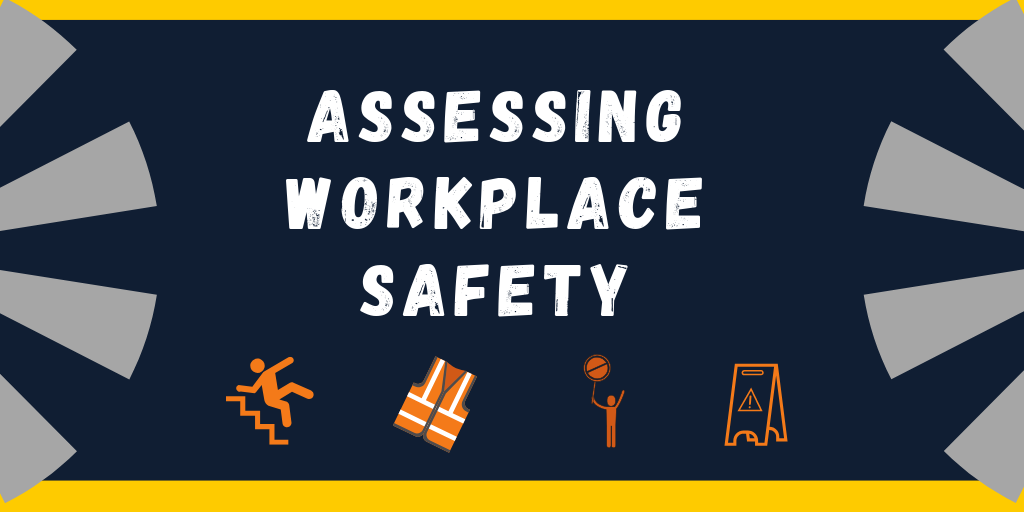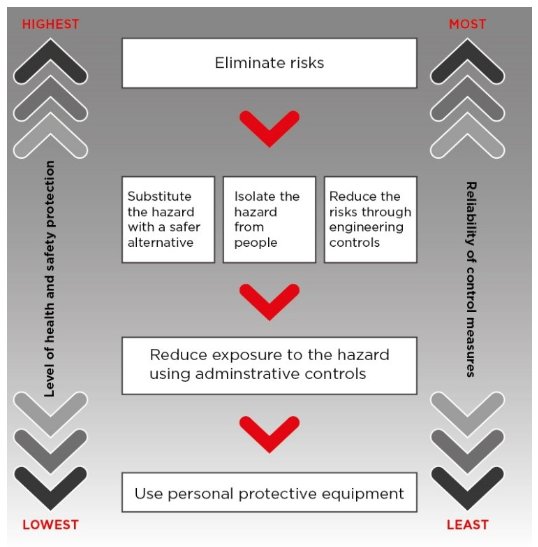Australian law requires employers to ensure that they provide a safe and healthy workplace for their employees and anyone that visits the workplace or facility. On the other hand, employees also have an obligation to ensure that they manage their own safety and health at work; and also avoid adversely affecting the safety or health other at work. One of the ways is by assessing safety in your workplace. This can be done by taking a step by step approach to identify hazards, assess risk (s) (Risk Assessment), controlling risk (s) and regularly reviewing the control measures in place to ensure that they are current and are still appropriate for managing the risks in the workplace.
1. Identify hazards
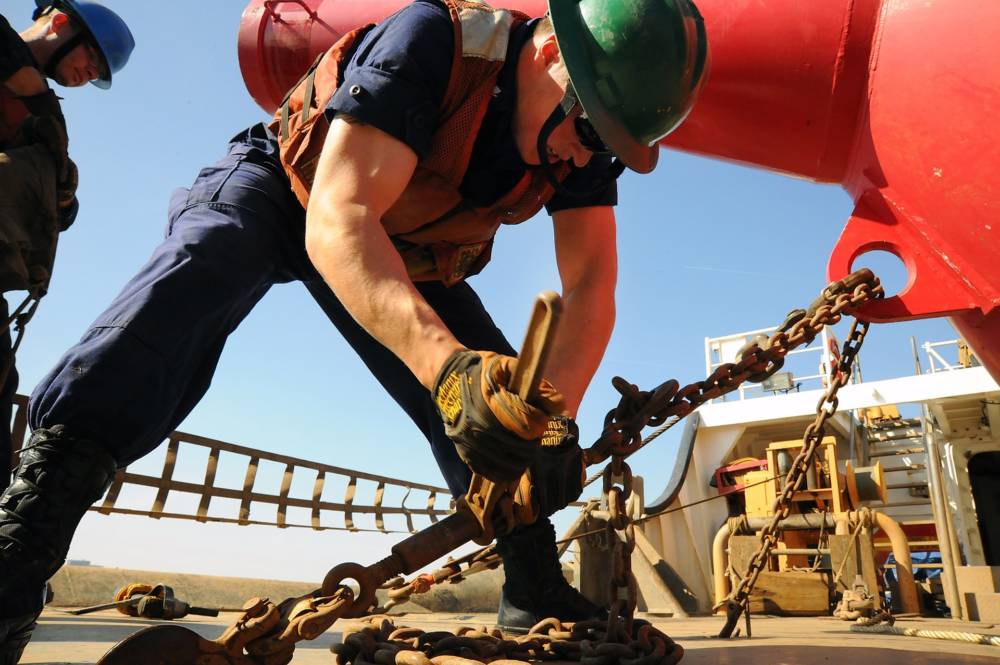 When identifying hazards, you’re considering what could potentially cause harm in your workplace. Hazards usually arise from:
When identifying hazards, you’re considering what could potentially cause harm in your workplace. Hazards usually arise from:
- the physical work environment,
- equipment, materials and substances used,
- work tasks and how they are performed, and
- work design and management.
(ProChoice, 2019)
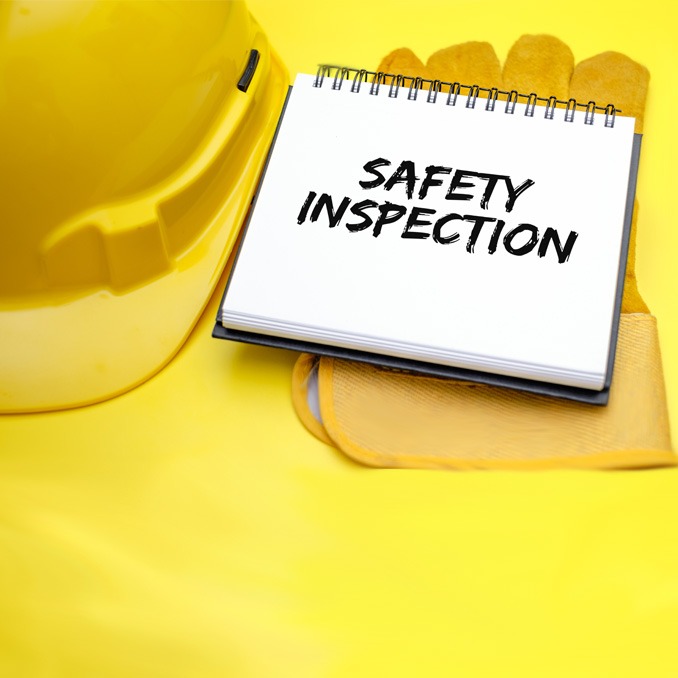
Source: CalNonprofits Insurance Services
One of the easiest ways to identify hazards is by completing a workplace inspection, i.e. walking around the workplace and observing how tasks are completed, and how plant and equipment are operated. This can assist in predicting what could go wrong. Near miss and incident reports and health monitoring results can also be helpful in identifying hazards. When identifying hazards, it is advisable to take a systematic approach to access all tasks and to consult with workers to help identify any potential hazards.
Also, consider encouraging all employees to assist with hazard identification by reporting any hazards that they identify.
2. Assessing risk (s)
Assessing risk means working out what could happen if someone is exposed to a hazard, how serious the harm could be and how likely that the identified hazard could harm someone.
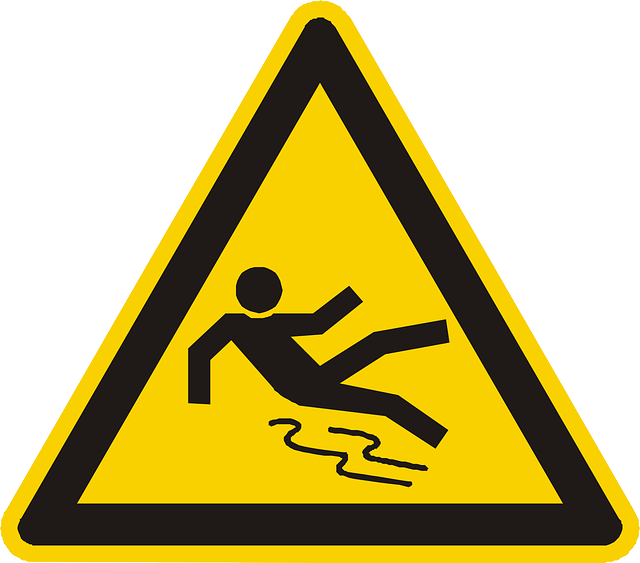 According to Safework Australia risk assessment can help you to determine:
According to Safework Australia risk assessment can help you to determine:
- how severe a risk is,
- whether any existing control measures are effective,
- what action you should take to control the risk, and
- how urgently the action needs to be taken.
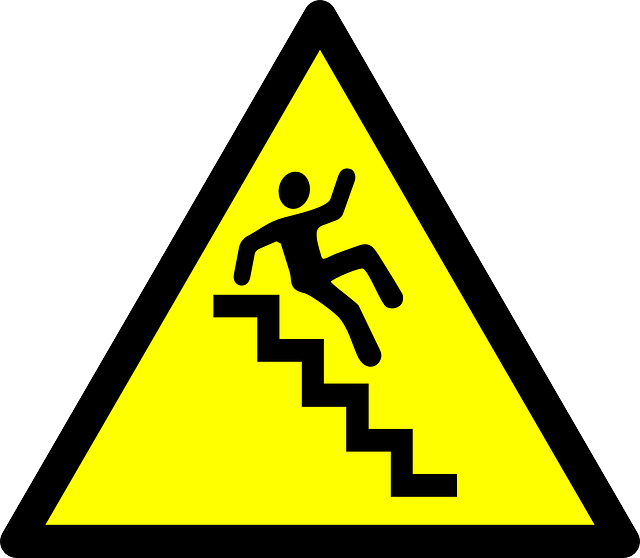 Risks should be assessed where there is uncertainty about how a hazard may result in injury or illness, were the activity involves multiple hazards and there is a lack of understanding about how the hazards may interact with each other, or if changes at the workplace occur that may impact on the effectiveness of existing control measures (Safe Work Australia, 2019).
Risks should be assessed where there is uncertainty about how a hazard may result in injury or illness, were the activity involves multiple hazards and there is a lack of understanding about how the hazards may interact with each other, or if changes at the workplace occur that may impact on the effectiveness of existing control measures (Safe Work Australia, 2019).
Where hazards have been identified, and there is potential for harm, the relevant supervisor should be advised so action to be taken.
3. Controlling the risk (s)
 Controlling risks is very important for minimising the risks so far as is reasonably practicable. Once the hazards have been identified and the risk assessed, the next step is to consider if the hazards can be removed, and if not how the risks can be controlled to minimise harm (DMIRS, 2015).
Controlling risks is very important for minimising the risks so far as is reasonably practicable. Once the hazards have been identified and the risk assessed, the next step is to consider if the hazards can be removed, and if not how the risks can be controlled to minimise harm (DMIRS, 2015).
When deciding how to control risks, it is always a good idea to consult workers who are directly affected by management measure and their involvement will increase the level of acceptance of changes that may be needed to the way they do their job.
Control of risks should prioritise hazards with the highest level of risk where possible and should be done using the hierarchy of control.
The hierarchy of control measures is a ranking system which can be applied in relation to any risk. The hierarchy ranks the risks from the highest level of protection and reliability to the lowest. In controlling risks, you must always aim for elimination of the risk as to the most effective control. The lower levels in the hierarchy are less effective than elimination but can still be useful for controlling some risks.
4. Reviewing control measures
Control measures that have been put in place should be reviewed regularly to ensure that they are working as planned (Safe Work Australia, 2019). According to Safework Australia, reviews are required:
- when the control measure is not effective
- before a change in the workplace give rise to a new or different risk
- if a new hazard or risk is identified
- if the results of consultation indicate that a review is necessary, or
- if a health and safety representative requests a review.
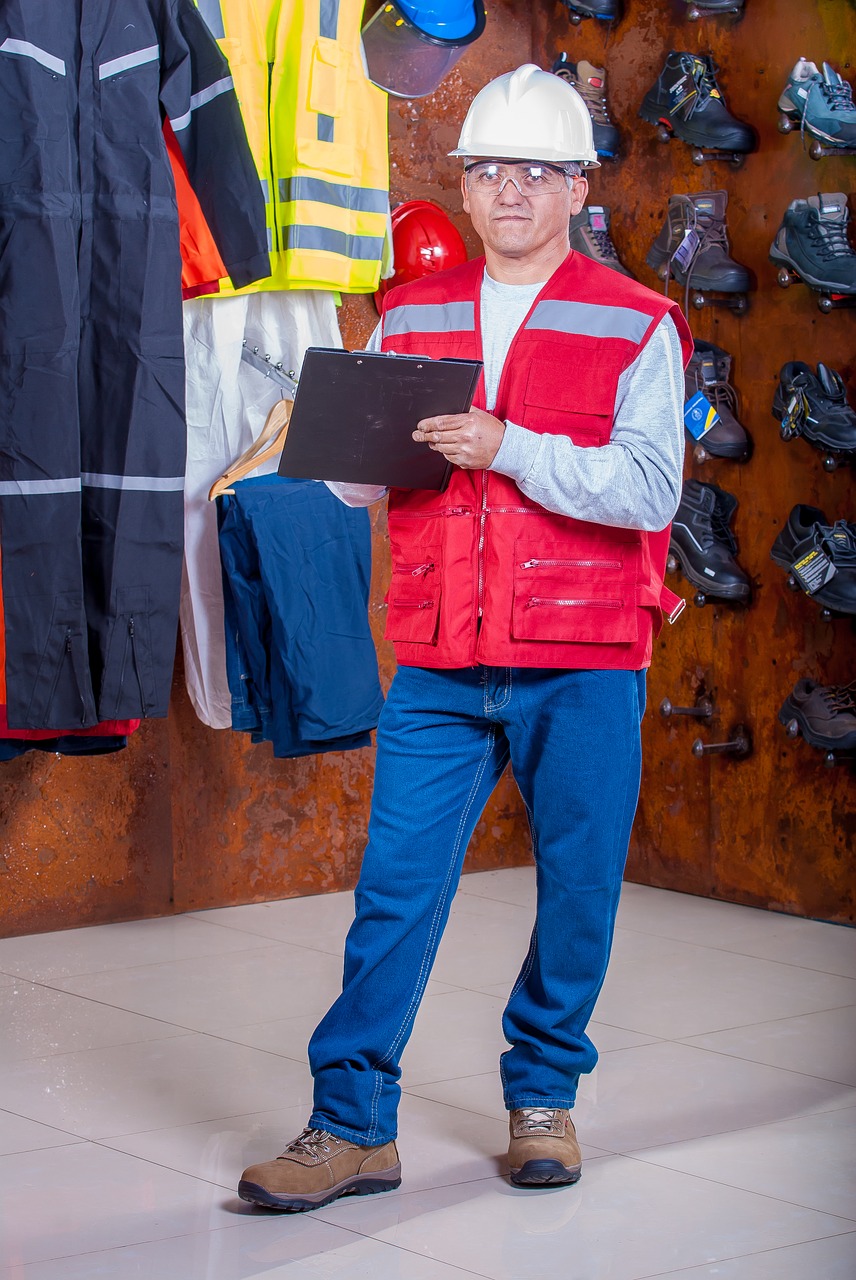 To review controls effectively, consider the following:
To review controls effectively, consider the following:
- whether the control measures currently in place are working effectively,
- whether the control measures have introduced other unforeseen hazards,
- whether all hazards have been identified,
- are safety procedures being followed,
- whether the procedures and training provided to employees has been successful,
- whether the frequency and severity of incidents have decreased over time, and
- If new legislation or new information has become available, consider the impact on the current controls and their effectiveness, i.e. are the current controls still the most effective?
However, priority should be based on the level of risk. Furthermore, control measures for high risks should be reviewed more frequently.
Have you taken time to check if you are meeting your safety obligations under the Occupational Safety and Health Act 1984? If you require assistance contact us on 08 9468 0338 or enquiries@integratesustainability.com.au.
Download PDF: ISPL Insight – Assessing Workplace Safety
References
DMIRS. (2015, 02 16). Small Business Safety. Retrieved from WorkSafe: https://www.commerce.wa.gov.au/worksafe/step-3-manage-risks
ProChoice. (2019, 30 04). ProChoice Safety Gear Blog. Retrieved from ProChoice Safety Gear: http://blog.prochoice.com.au/workplace-health-and-safety/workplace-hazards-risk-assessment/
Safe Work Australia. (2019, 04 30). Identify, assess and control hazards. Retrieved from Safe Work Australia: https://www.safeworkaustralia.gov.au/risk

